Petrol station in Wehlau
To begin with, one unusual indicator from the statistics of 1932: in Germany there were 2104 residents per one petrol station. And this tricky number in Wehlau can be determined very conditionally: according to the surviving data, the population of Wehlau in the thirties of the twentieth century increased from 6000 to 8000 residents, the gasoline era of Wehlau lasted about twenty years (the first petrol station, judging by the postcards, appeared before 1931, the history of Wehlau ended in 1945), and the number of images of petrol stations found on the cards is as many as eight! Even very rough, averaged calculations indicate that in terms of petrol stations, small Wehlau looked decent - one petrol station for no more than one and a half thousand people. What an indicator! It was significantly better than the national level.
However, the figure is understandable - there were enough consumers in Wehlau. The annual horse market alone was worth something - not only did people arrive there in harnesses, but many business guests arrived on "iron horses". Wehlau's prosperity was associated for centuries with the annual horse fair, its participants traveled many kilometers along European roads. The city greeted guests with an abundance of hotels, restaurants, bars, shops and... petrol stations!
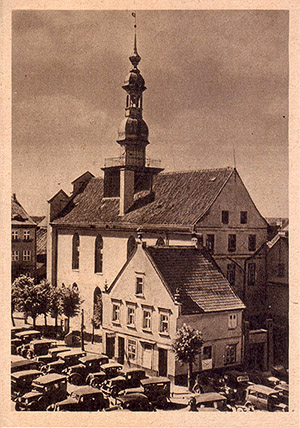
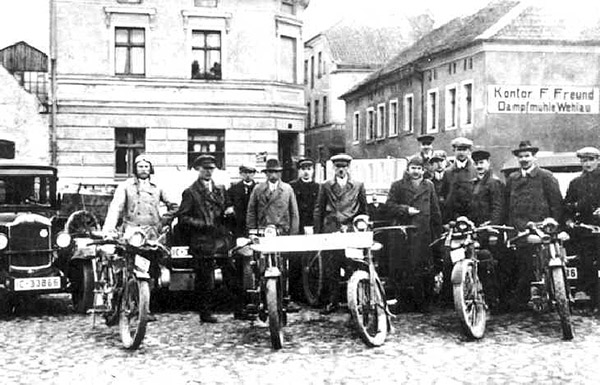
We will see for ourselves that Wehlau can be considered the “kingdom of petrol stations” by taking a virtual tour of the city’s petrol stations, and at the same time touching on the history of petrol station development. Let’s go!
Officially, the world's first petrol station is considered to be a pharmacy in the German city of Wiesloch. It was there in August 1888 that Bertha Benz, the wife of the inventor of the first automobile, Karl Benz, filled up her car's tank with fuel during a trip from Mannheim to Pforzheim. Having covered a distance of 106 km, she emptied all the pharmacies on her way. She filled her car with ligroin, which, like kerosene, was used as a solvent, stain remover and even, supposedly, a disinfectant, and it was sold in glass bottles in pharmacies.
It is not known which fuel company was the first to enter the Wehlau petrol market. The postcards showed six of them, five industry leaders of those years - DAPG, Shell, BV-Aral, BP-Olex, Leuna, and one small firm Casaled.
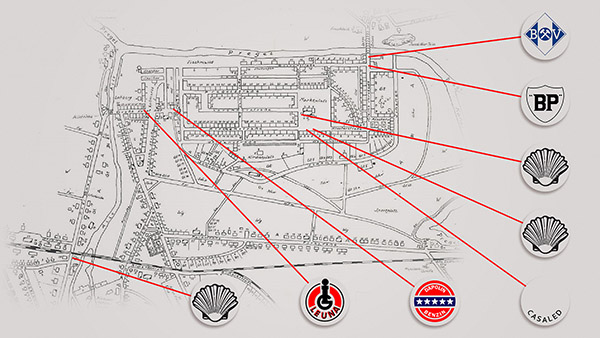
Perhaps the most honorable place in Wehlau was occupied by the German petrol station DAPG – the leader of the fuel sector of the German economy. The petrol station with its logo was located at the Stone Gate (Steintor).
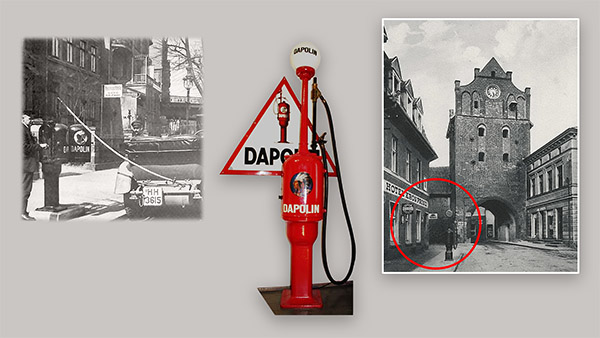
The Dapolin petrol pumps, with the Indian logo, were manufactured by the American company Gilbert & Barker. The first such pump in Germany was installed in Hamburg on Wagnerstrasse, next to the Robert Zippan pharmacy, on April 14, 1923. In 1931, Dapolin was renamed Standard Gasoline. Therefore, the photo above was taken before 1931.

Following the change in brand names, the appearance and design of DAPG fuel pumps changed.
One of the Shell company's points, the second in the top five suppliers in the fuel market, was located behind the railway crossing in the direction of Allenburg (now Druzhba), near the walls of the Gasthof zur Ostbahn station hotel.
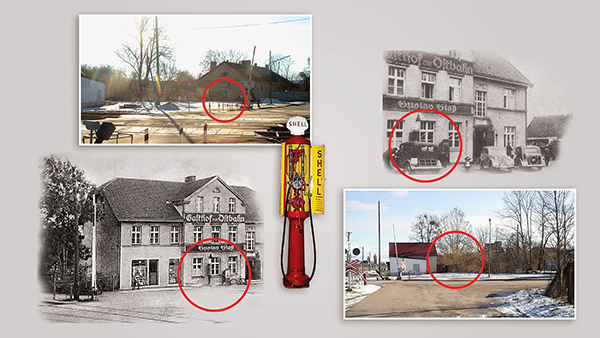
And here it should be noted that the people nicknamed the beautiful petrol stations with their doors wide open "iron maidens". Not at all romantic... The reason for this is the external resemblance to one of the instruments of torture or capital punishment. Allegedly, there was such a device in the Middle Ages, it was a cabinet made of iron, the inside of which was covered with long sharp spikes.
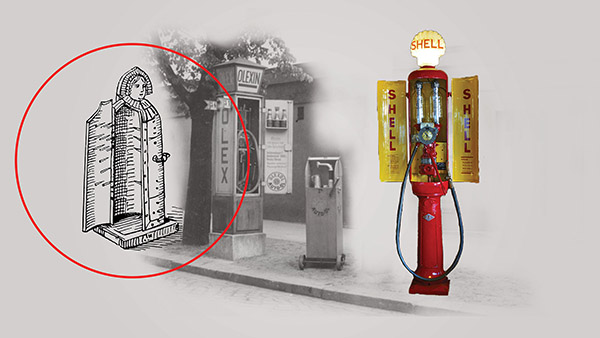
An important detail: the logo on the “maiden’s” head corresponded to the brand of the fuel manufacturer.
Old postcards don't spoil the quality of the picture, but the shape of the pump suggests that there was an "iron maiden" from Shell on Marktplatz near the town hall. Judging by the unbuilt houses across the river, it didn't stay there for long.

Whether the proximity to the town hall building turned out to be inappropriate, or another reason forced the removal of the petrol station from the square - we don’t know, but in later photographs the petrol station is no longer there.
Postcards published in the late 1930s and early 1940s suggest that this pump, complete with an oil pump, moved across the road to Kirchenstrasse and, following tradition, took its place near the pharmacy and numerous shops.
Right there, near Otto Wolfromm's pharmacy, the Casaled petrol station is visible in the frame.
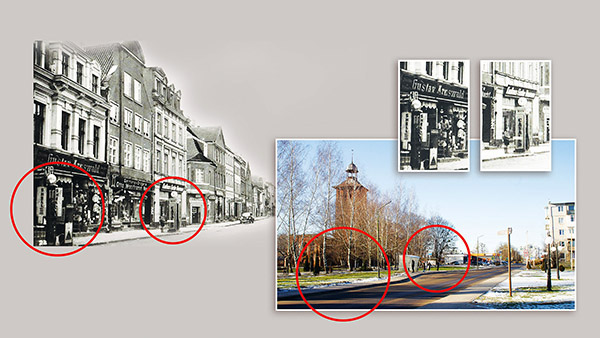
Casaled is the very representative of the small oil business, which accounted for only five percent of the pre-war fuel market in Germany.
Searches for information about this company did not bring any encouraging results... All that was found was an advert for the sale of a scanned map of highways with a network of Casaled petrol stations in East Prussia, published by Casati & Lederhausen, and a mention in an address book for 1935 that Casati & Lederhausen, a company engaged in the import of mineral oils, was located in Königsberg at Vorstedtische Langgasse 75. Incidentally, Casati & Lederhausen has not sunk into oblivion: a company with this name exists in Germany to this day, and is still associated with petroleum products...
The next participants in the parade, BP-Olex and BV-Aral, stood on Kleine Vorstadt.
The second house to the left of the Long Bridge (Langebrücke) at the entrance to Wehlau – the Steiniger & Radtke building – has not survived to this day; a small park now stands in its place. A BP-Olex petrol station would today stand on the sidewalk in front of the park fence.
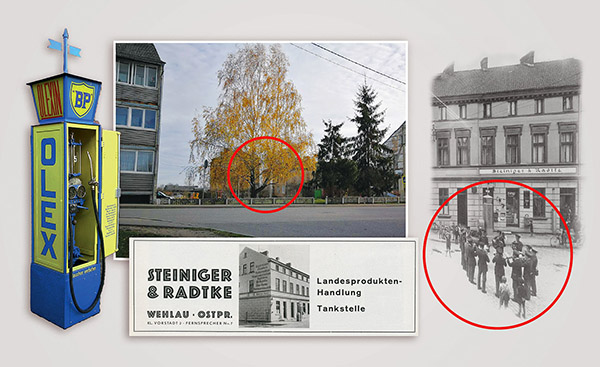
And the first house, just beyond the bridge on the left, which is on the very bank of the Pregolya, built in Soviet times, stands on the site of the house that belonged to the family of Mr. Menzel. In front of it there was once a filling station from the top five. The fact that the pump belongs to the company BV-Aral is revealed by its remarkable design.
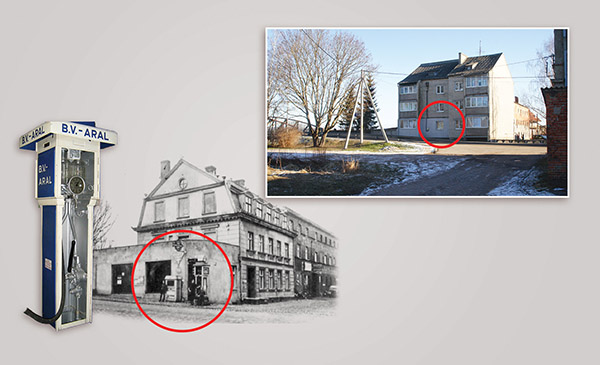
The Leuna chain completes our parade of Wehlau petrol stations. Among almost a hundred petrol stations in East Prussia alone, its list includes one local address: Wehlau, Große Vorstadt 8. Owner: R. Kannenberg. Additional services: telephone (number 129) and garage.
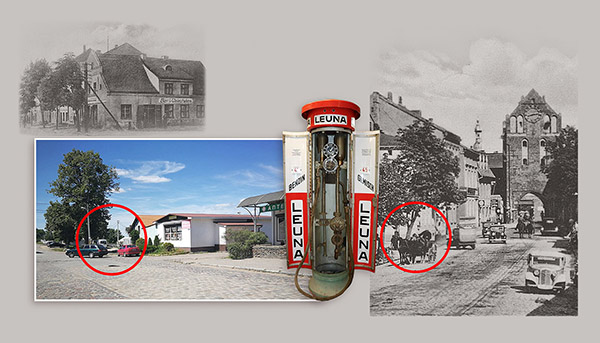
How were petrol stations arranged?
As an example, a pump diagram from Dapolin, 1926. Usually, petrol stations were installed on the sidewalk near pharmacies, shops or hotels. At a depth of one meter underground, directly under the column or nearby, there was a fuel tank, about one and a half tons. The columns were equipped with a pump, with the help of which fuel was poured into the car's tank - the operating principle is familiar to every driver.
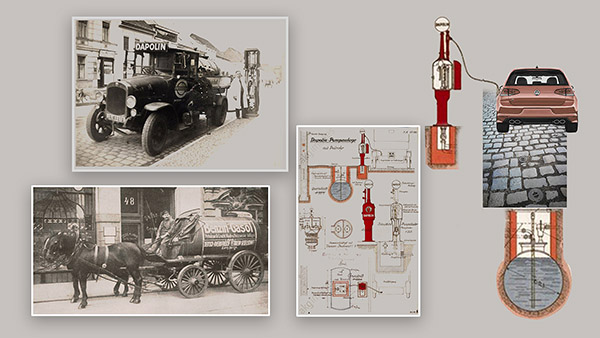
Sources:
tankstellenmuseum.de
bildarchiv-ostpreussen.de
kreisgemeinschaft-wehlau.de
